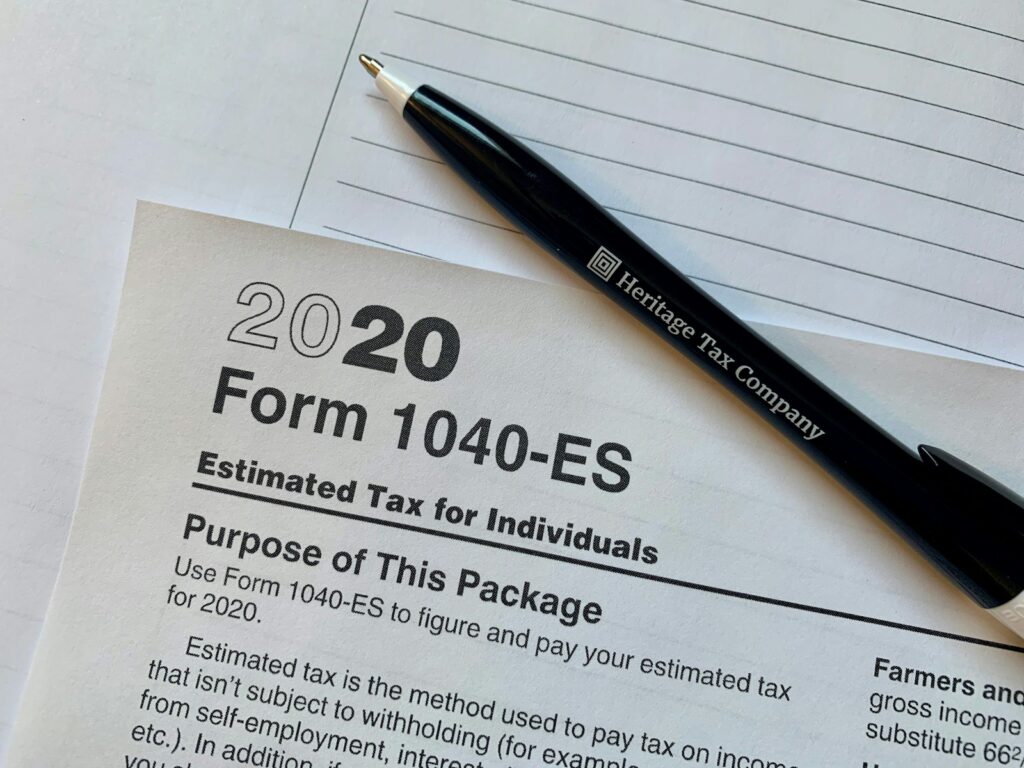The federal government’s budget deficit has once again commanded national attention, with the latest figures indicating a significant expansion during the current fiscal year. New data from the nonpartisan Congressional Budget Office (CBO) reveals that the deficit has nearly reached $2 trillion, a critical threshold that underscores the persistent fiscal challenges facing the United States. This detailed examination delves into the factors contributing to this widening gap, exploring both the growth in federal spending and the complex dynamics of tax receipts, including the often-discussed role of tariffs.
Understanding the intricacies of the federal budget is paramount for policymakers, economists, and the American public alike. The balance between government expenditures and revenue collection directly influences national debt, economic stability, and future prosperity. This report aims to provide a clear, data-driven analysis of the latest budgetary figures, dissecting the various components that have shaped the nation’s financial landscape over the first eleven months of fiscal year 2025, offering a comprehensive view of where the nation stands fiscally.
The ongoing debate surrounding fiscal responsibility often centers on identifying the primary drivers of deficit growth and evaluating the effectiveness of revenue-generating policies. From the rising costs of mandatory programs to the fluctuating performance of different tax categories, each element plays a crucial role in the overall financial picture. By meticulously examining these components, we can gain a clearer perspective on the pressures and opportunities within the federal budget, allowing for a more informed discourse on potential pathways to long-term fiscal health.

1. **The Current Federal Deficit Landscape**The federal government’s budget deficit reached $1.989 trillion in the first eleven months of fiscal year 2025, according to the recent monthly budget update from the nonpartisan Congressional Budget Office. This figure positions the nation’s shortfall perilously close to the $2 trillion mark for the current fiscal year, highlighting an accelerating trend in the nation’s financial obligations.
This substantial deficit figure represents the accumulated difference between federal spending and revenue collected over the nearly completed fiscal year. The CBO’s data provides a critical, independent assessment of the government’s fiscal health, offering a factual basis for understanding the scale of the financial challenges at hand.
The trajectory of the deficit in fiscal year 2025 has become a central point of discussion among economic analysts and policymakers. As the nation grapples with a growing national debt, the annual deficit serves as a key indicator of the fiscal pressures that accumulate over time. The CBO’s consistent reporting helps to illuminate these trends, providing essential context for policy decisions.
Read more about: China’s Naval Ascendancy: A Data-Driven Examination of its World-Class Fleet’s Strengths and Strategic Vulnerabilities

2. **Year-over-Year Deficit Expansion**Compared to the same period in the previous fiscal year, the deficit for the first eleven months of fiscal year 2025 has widened by $92 billion. This nearly $100 billion increase underscores a concerning year-over-year expansion in the federal government’s financial shortfall, indicating that the gap between spending and revenue is not merely persistent but actively growing.
This increase of $92 billion from the first eleven months of fiscal year 2024 to fiscal year 2025 represents a notable shift. Such an expansion suggests that current fiscal policies and economic conditions are contributing to a greater imbalance, rather than moving towards a reduction in the annual deficit. The consistent growth in the deficit year-on-year points to underlying structural issues within the federal budget.
The continuous widening of the deficit carries significant implications for the national debt and the broader economy. Each year’s deficit adds to the cumulative national debt, increasing future interest payment obligations and potentially limiting the government’s fiscal flexibility. Understanding this year-over-year change is crucial for assessing the long-term sustainability of federal finances.
Read more about: On the Brink: Exploring Entities Facing Serious Financial Jeopardy

3. **Overall Federal Spending Growth**Total federal spending in the first eleven months of fiscal year 2025 increased by $391 billion compared to the same period a year ago, representing a 5% rise. This substantial increase in expenditures is a primary driver behind the widening budget deficit, demonstrating that the government’s outlay continues to expand significantly.
The $391 billion increase in spending highlights the upward pressure on the federal budget. This growth across various government programs and operations contributes directly to the national shortfall when not matched by equivalent increases in revenue. Analyzing these spending patterns is essential for identifying areas of budgetary expansion.
Much of this $395 billion increase from last year was driven by mandatory spending programs, such as Social Security and Medicare, as well as the rising cost of debt service. These categories of expenditure represent significant and often non-discretionary commitments for the federal government, making their growth particularly impactful on the overall budget.
Read more about: A Dollar’s Journey: Unpacking the Surprising Truth About $5,000 in the ’70s and Its Modern-Day Purchasing Power

4. **Rise in Federal Tax Receipts**Despite the burgeoning deficit, federal tax receipts did experience an increase, rising by $299 billion, or 7%, in the first eleven months of fiscal year 2025. This growth in revenue indicates a positive trend in government income, yet it was ultimately insufficient to offset the even larger increase in federal spending during the same period.
The 7% rise in tax receipts is a notable development, reflecting economic activity and changes in various tax categories. Such an increase in revenue is typically viewed as beneficial for fiscal health, as it contributes to narrowing the budget gap. However, the context of concurrent, higher spending growth necessitates a more nuanced interpretation.
While tax collections grew, the overall financial picture shows that expenditures outpaced this revenue growth. This dynamic is central to understanding why the deficit continues to expand, even when the government is taking in more money. The balance between these two fundamental components of the budget remains precarious.
Read more about: U.S. Deficit Soars to $291 Billion in July Amidst Surging Outlays and a Complex Tariff Revenue Landscape for Businesses and Investors

5. **Tariffs as a Revenue Driver**A significant portion of the increase in federal tax receipts was directly attributable to the Trump administration’s tariffs, which imposed higher import taxes on many goods since February. Customs duties collected surged by $95 billion, or a remarkable 137%, in the first eleven months of fiscal year 2025 compared to the previous year, totaling $165 billion.
This dramatic rise in customs revenue highlights the substantial impact of tariff policies on government income. The data indicates that the federal government is indeed taking in higher tariff revenues under what are described as Trump’s more aggressive tariff policies. Specific figures, such as a 273% increase or $21 billion in customs revenue in July over the same period last year, further underscore this trend.
Further analysis reveals that through July 11, the federal government had collected approximately $100 billion in tariffs so far this year. This contrasts sharply with less than $48 billion collected during the same period in 2024, before the full implementation of these policies. The monthly data from June 2025 showed $27 billion in tariffs collected, an increase of $21 billion from $6 billion a year earlier, directly linked to these trade policies. Currently, tariffs include a baseline of 10% for all countries, with additional tariffs on specific products like steel.
Read more about: The Dragon’s Ascent: Unpacking China’s Modern Military and Expanding Global Reach by 2025

6. **Individual Income Tax Performance**Individual income tax receipts showed robust growth, increasing by $181 billion, or 8%, in fiscal year 2025 so far. These receipts have totaled $2.357 trillion during the first eleven months of the fiscal year, making them the largest single component of federal tax revenue and a significant contributor to the overall rise in receipts.
The 8% growth in individual income tax collections reflects a healthy performance in this crucial revenue stream. This increase suggests positive trends in employment, wages, and other income-generating activities that contribute to the tax base. The consistent rise in this category is vital for the government’s financial stability.
Accounting for a substantial portion of total federal income, the strong performance of individual income taxes is a key factor in the revenue side of the budget equation. While its growth helps to mitigate the deficit, the larger context of escalating spending means that even robust individual tax collections are outpaced by expenditures.
Read more about: Oops! 10 Cars Drivers Confess They Wish They Could ‘Unpurchase’ – And How You Can Avoid Their Regrets

7. **Payroll Tax Contributions**Payroll taxes also demonstrated growth, rising by $48 billion, or 3%, to total $1.615 trillion in the first eleven months of the fiscal year. This steady increase in payroll tax contributions reflects ongoing employment and wage activity, providing a consistent, albeit less dramatic, boost to federal revenue compared to individual income taxes.
The 3% increase in payroll taxes, while modest compared to other revenue streams, is important for its foundational role in federal finance. These taxes are directly linked to employment levels and wages, providing a stable source of funding that contributes to the broader tax receipt base. Their consistent collection is a fundamental aspect of the nation’s fiscal operations.
Payroll taxes are a significant and predictable component of federal revenue, underpinning essential government programs. The sustained growth in this category, as indicated by the $48 billion increase, signifies continued economic activity and employment levels. These taxes contribute consistently to the government’s overall income, even as the larger budget picture presents considerable challenges.
Navigating the complexities of the federal budget requires a thorough understanding of both revenue shortfalls and the underlying factors driving government expenditures. While tax receipts, including tariffs, have seen increases, they have demonstrably been outpaced by a rising tide of spending. This section will delve deeper into the specific categories of federal outlays, the current monthly fiscal landscape, and the long-term projections that shape the nation’s financial future, critically assessing the broader economic implications of current fiscal policies.
Read more about: Navigating a ‘Black Hole’ Job Market: A Boomer’s Seven-Year Struggle Against Suspected Ageism and What It Means for Older Workers

8. **Corporate Income Tax Performance**In contrast to the growth observed in individual and payroll taxes, corporate income tax receipts registered a decline, falling by $32 billion, or 8%, compared to the same period in the previous year. This reduction represents a notable shift in one of the federal government’s key revenue streams, prompting a closer examination of its causes and broader implications for fiscal policy.
The Congressional Budget Office (CBO) attributed this apparent decline largely to a specific accounting anomaly. Natural disasters declared in fiscal year 2023 led to approximately $35 billion in corporate tax payments being deferred and shifted into fiscal year 2024. This accounting adjustment creates an impression of a year-over-year decrease that does not necessarily reflect a fundamental weakening in corporate profitability or the underlying tax base.
While the CBO’s explanation clarifies the immediate cause of the dip, the fluctuating nature of corporate tax receipts remains a significant factor in the overall revenue picture. Policymakers must continually monitor these trends, distinguishing between one-time statistical distortions and more persistent shifts in corporate tax contributions, to accurately forecast federal income and inform budgetary decisions.
Read more about: Navigating the Golden Age: A Retiree’s Guide to Investing in and Enjoying Classic Cars for Both Passion and Profit
9. **Mandatory Spending: Social Security**A substantial component of the overall increase in federal spending stemmed from mandatory programs, with Social Security benefits seeing a notable rise. Payments for Social Security were up by $111 billion, an 8% increase from the same period last year, underscoring the growing financial commitments associated with this crucial social safety net.
This increase is primarily attributable to two interwoven factors: the annual cost-of-living adjustment (COLA) and the ongoing demographic trend of a growing number of beneficiaries. As the U.S. population ages, the pool of retirees and eligible recipients expands, placing continuous upward pressure on the program’s expenditures.
The sustained growth in Social Security outlays highlights a fundamental structural challenge within the federal budget. These payments are largely non-discretionary, mandated by law, and directly tied to demographic realities. Managing the long-term fiscal health of such programs requires proactive policy considerations that account for both benefit adjustments and the evolving beneficiary base.

10. **Mandatory Spending: Medicare**Mirroring the trends observed in Social Security, Medicare spending also experienced a significant increase, rising by 8% and totaling $64 billion more than in the same period last year. This expansion in healthcare outlays further illustrates the pressures exerted by mandatory programs on the federal budget, contributing to the widening deficit.
The increase in Medicare expenditures is a consequence of both higher payment rates for medical services and an expanding number of enrolled beneficiaries. As the population ages and healthcare costs continue to climb, the financial demands placed upon the Medicare system naturally grow, reflecting both utilization and cost inflation.
Such substantial increases in Medicare spending necessitate ongoing evaluation of healthcare financing mechanisms and cost containment strategies. The program’s pivotal role in public health, coupled with its significant budgetary footprint, makes it a critical area for fiscal planning and reform efforts aimed at ensuring long-term sustainability.

11. **Rising Cost of National Debt Service**Another powerful driver of escalating federal spending and the widening budget deficit is the rising cost of servicing the national debt. Net interest payments surged by $72 billion, an 8% increase, reflecting the impact of a national debt that has grown considerably larger than in the previous year. This escalating expense represents a significant and increasingly inflexible component of federal outlays.
The federal government’s gross national debt is currently approaching the $37 trillion mark, a staggering figure that underscores the cumulative effect of decades of budget deficits. As the debt principal expands, even modest increases in interest rates or the size of the debt itself can lead to substantial additional costs, consuming an ever-larger share of the federal budget.
Projections from the Congressional Budget Office indicate that the U.S. debt is expected to surge to 120% of GDP over the next decade. Such a trajectory highlights the profound fiscal challenges ahead, as interest payments risk crowding out other essential government investments and services, further constraining future fiscal flexibility.
Read more about: Unmasking the True Price: 14 Hidden Costs That Turn Car Ownership into a Financial Maze for Every Driver

12. **Recent Monthly Deficit Figures**Examining the monthly budgetary performance provides a more granular view of the fiscal landscape. For August alone, the federal government recorded a budget deficit of $360 billion. This figure, while substantial, actually represents a decrease of $20 billion compared to the deficit incurred in August of the previous year.
The preceding month, July, also saw a considerable deficit, which was subsequently revised upwards by $2 billion to a total of $291 billion. These monthly figures, though subject to fluctuations and revisions, collectively contribute to the overall annual deficit and offer insights into ongoing spending and revenue trends.
While a monthly reduction, such as that seen in August, might offer a brief reprieve, it is critical to contextualize these figures within the broader, persistent pattern of deficit expansion. The sum of these monthly shortfalls ultimately feeds into the cumulative annual deficit, illustrating the continuous financial challenges confronting the nation.
Read more about: The Shifting Automotive Landscape: Why Used Car Values Are Collapsing, and What It Means for Buyers and the Economy

13. **Fiscal Year 2025 Final Deficit Projections and Adjustments**Looking ahead, the Congressional Budget Office has provided its latest estimate for the final budget deficit of fiscal year 2025, projecting it to total $1.9 trillion. This revised forecast incorporates anticipated budgetary adjustments and offers a clearer picture of the expected annual shortfall as the fiscal year draws to a close.
A significant factor influencing this projection is an anticipated spending reduction of approximately $130 billion in September. This reduction is attributed to changes made to federal student loan programs under the Trump administration’s “One Big Beautiful Bill Act,” demonstrating how specific legislative actions can impact the annual fiscal outcome.
Should this $1.9 trillion projection materialize, it would mark the third-largest budget deficit in U.S. history. This figure would trail only the deficits recorded in fiscal years 2020 and 2021, which were primarily incurred during the peak of the COVID-19 pandemic, placing the current fiscal challenges in a stark historical context.
Read more about: Trump’s Tariffs: Billions in Revenue, Trillions in Questions – Unpacking the Financial and Economic Ripple Effects

14. **Broader Economic Impact and Long-Term Tariff Projections**Beyond the immediate budgetary figures, the CBO has also provided comprehensive analyses of the broader economic implications of tariff policies, particularly regarding their long-term effects on the deficit and the economy. While some assert tariffs could meaningfully reduce federal debt, economists often project only modest reductions.
The CBO’s assessment from June estimated that President Donald Trump’s sweeping tariff plan could reduce deficits by $2.8 trillion over a 10-year period. However, this deficit reduction would come at the cost of shrinking the economy, raising the inflation rate, and ultimately reducing the purchasing power of households overall.
More detailed CBO warnings suggest that tariffs could make consumer and capital goods more expensive, deter U.S. businesses from new investment, reduce productivity, and provoke retaliatory measures that harm U.S. exports. These combined effects are projected to lower U.S. output, resulting in a net reduction of 0.6% in real GDP by 2034, even with some offsetting domestic production.
On the inflation front, the CBO anticipates that Trump tariffs could boost prices by 1% in 2026, though their additional significant effects beyond that year are not expected. Furthermore, the long-term impact on the national debt is less definitive; while tariffs might lower deficits, they are not expected to eliminate them, meaning they would continue contributing to the overall debt pile, projected to be $22.1 trillion over the next 10 years.
Significant uncertainties also cloud the long-term viability of tariff revenue. Legal challenges against the administration’s tariff powers, if upheld on appeal, could cause current tariff revenues to largely disappear. Moreover, a future presidential administration could reverse these policies by executive order, limiting any potential revenue gains to a shorter timeframe than the projected decade.
Read more about: Market Reconfiguration: Examining Why Leading EV Brands from 2023 Face New Pressures in 2024’s Evolving Landscape
The analysis of the federal budget deficit reveals a complex and multifaceted challenge, characterized by expanding mandatory spending, rising interest costs on a growing national debt, and the nuanced, often debated, impact of tariff revenues. While some revenue streams have seen increases, these have been largely insufficient to offset the robust growth in expenditures. The long-term projections highlight persistent fiscal pressures and underscore the necessity for sustained attention and strategic policy interventions to navigate the nation’s financial trajectory.





